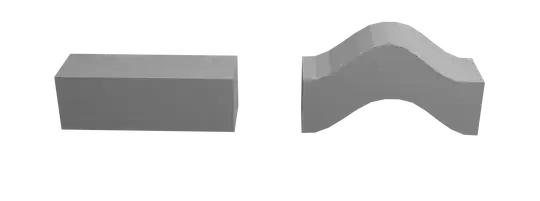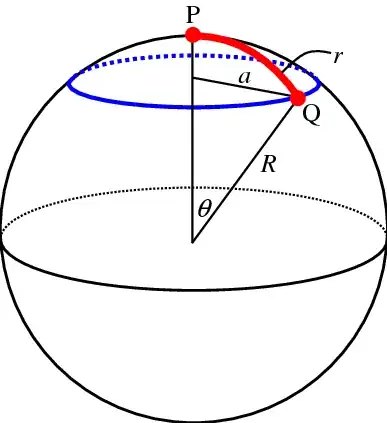I am a bit confused on how GTR uses intrinsic curvature instead of extrinsic curvature. Maybe it is just a misunderstanding, but I will do my best to describe my question:
If we take an object of $n$ dimensions and want to bend it, we need $n+1$ dimensions. This can be seen if we take a sheet of paper (which we simplyfy to 2 dimensions): If we want to bend it, 3 dimensions are needed!
Similarly, in 3 dimensions, we can only bend a 3-dimensional Cube over 3 dimensions:
So in my understanding, we would need 4 dimensions to bend a 3-dimensional object or spacetime (in this case, a fourth space dimension would be needed in addition to the 3 space and 1 time dimensions of spacetime, so 5 dimensions in total).
However, I've often read that General Relativity does not use a fifth dimension and uses intrinsic curvature instead. How does this compare to the (apparent?) necessity to have $n+1$ dimensions to bend something of $n$ dimensions?
In this answer, the user wrote
Intrinsic and extrinsic curvature are connected in that they both make the same predictions. Just how you do the math is a bit different.
Does this mean that intrinsic/extrinsic curvature is only related to the mathematical process? Or do they also refer to reality?
Even though GTR makes accurate predictions without using any higher dimensions to embed our four-dimensional spacetime, is there any evidence that spacetime must exist in a higher dimension, as this is the only possible way to bend it non-3-dimensional?
As I am still in school, I would prefer a non-mathematical answer, but if this is not possible, I will try my best to figure the math out.
Related Questions:
What is intrinsic curvature? This question focusses on what intrinsic curvature is (as the title says). My question is however more focussed on why intrinsic curvature is possible in the first place.
Answers in Does the shape of the Universe refer to the curvature of spacetime in 5-dimensional space? The answers clarify that it is not necessary to use more than four dimensions, but do not tell how it is possible to bend spacetime if there is no higher dimension.
Update
The answers so far are great and helped me a lot in understanding intrinsic and extrinsic curvature. I still however do not understand why there is no extra dimension needed for intrinsic curvature. According to the answers, extrinsic curvature is not noticed from the brane that is curved (as the bend paper in my first image - the sum of angles is still 180° for every triangle on the plane).
So for intrinsic curvature, we need to bend the paper in a way that it can be measured by hypothetical 2d beings living on the paper, this means the paper must be curved in a way that the sum of angles does not add up to 180°.
This could be achieved by bending the paper in a way that is commonly used in the "bend rubber sheet analogy". This however requires an extra dimension.
So I still cannot understand how in GTR, spacetime can be bend in a way that triangles do not have a sum on angles of 180°, but no extra dimension is needed.
Also, as apparently no extra dimension is needed (which I don't understand), how does this explain the experiment they did with Cassini? (They send a signal from the spacecraft to earth and by taking the time the signal needed to arrive and Cassini's distance, they calculated a path of the signal that was, I believe, 50km than it should have been. Apparently, this was caused by the spacetime curvature of the sun). "Where" was this signal that it moved an extra 50km if there is no extra dimension over which spacetime is curved?
(This last question should not be asked as a seperate question as it is directly linked to my original question)
So, why is there no extra dimension in GTR? I cannot imagine a way of curving spactime in a manner that we can notice it (such as with cassini or the sum of angles) without using an extra dimension.
Update 2
I kind of "accepted" that the analogy of the bend sheet of paper or fabric (which I know is incorrect/incomplete) cannot be transferred to 3d-space or 4d-spacetime and that curvature in mathematics/physics is probably something different that I thought of (with the analogies).
I found the following image:
(Source)
Does this image (I wouldn't call it an analogy anymore) better describe how spacetime is curved/bend/warped? At least, it would explain why there is no 5th dimension.








